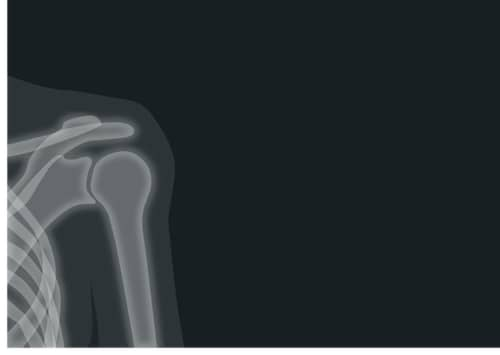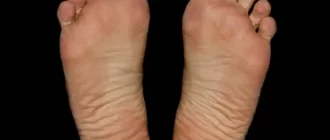Calf muscle pain can range from a mild ache to severe discomfort, impacting mobility and daily activities. This pain is often caused by muscle strain, dehydration, poor circulation, or underlying conditions like deep vein thrombosis (DVT) or nerve compression. Addressing the root cause is essential for effective relief.
Average Cost of Calf Pain Treatments in the U.S. (USD)
The chart illustrates the average cost of various treatments for calf pain in the U.S. Physical therapy and shockwave therapy are the most expensive options, whereas over-the-counter pain relievers remain the most affordable.
Common Causes of Calf Pain
- Muscle Strain: Overuse, intense workouts, or sudden movements can lead to microtears in the muscle fibers.
- Symptoms: Sharp or dull pain, swelling, bruising, and tenderness in the calf. Pain increases with movement or when pressing on the affected area.
- Dehydration and Electrolyte Imbalance: Low levels of potassium, magnesium, or sodium can trigger painful muscle cramps.
- Symptoms: Sudden, intense muscle spasms, tightness, and difficulty relaxing the muscle. May be accompanied by general fatigue and dizziness.
- Poor Blood Circulation: Conditions like peripheral artery disease (PAD) can reduce blood flow, leading to chronic calf pain.
- Symptoms: Aching or cramping pain, especially after walking or prolonged standing. May include cold or pale skin on the legs and delayed wound healing.
- Nerve Compression: Sciatica or other nerve-related issues can radiate pain into the calf.
- Symptoms: Sharp, burning pain that starts in the lower back or buttocks and travels down the leg. May be accompanied by numbness, tingling, or muscle weakness.
- DVT (Deep Vein Thrombosis): A serious condition where blood clots form in deep veins, requiring immediate medical attention.
- Symptoms: Persistent, throbbing pain in one calf, swelling, warmth, and redness. The pain may worsen when flexing the foot upward. Seek emergency care if you experience shortness of breath or chest pain.
Frequency of Calf Pain Causes (%)
| Cause | Frequency (%) |
|---|---|
| Muscle Strain | 42% |
| Dehydration and Electrolyte Imbalance | 18% |
| Poor Blood Circulation | 15% |
| Nerve Compression | 12% |
| Deep Vein Thrombosis (DVT) | 13% |
This chart displays the frequency of common causes of calf pain. Muscle strain is the leading cause, followed by dehydration and electrolyte imbalance. Poor blood circulation, nerve compression, and DVT also contribute to calf pain.
Home Remedies for Immediate Relief
- Rest and Elevation – Reduce strain by keeping the leg elevated and avoiding excessive movement. Ideally, the leg should be elevated above heart level using pillows or a support cushion for 15-30 minutes. This helps reduce swelling and improves circulation.
- Cold or Warm Compress – Apply an ice pack wrapped in a cloth (for acute pain and inflammation) for 15-20 minutes every 2-3 hours. If the pain is due to muscle stiffness, a heating pad or warm towel can be applied for 15-20 minutes to promote blood flow and relax the muscles.
- Hydration and Electrolyte Balance – Drink plenty of water and consume electrolyte-rich foods like bananas, spinach, and oranges. For rapid replenishment, electrolyte supplements or sports drinks can be helpful, especially after physical exertion.
- Gentle Stretching – Performing light stretches can prevent stiffness and accelerate recovery.
- Standing Calf Stretch: Stand facing a wall, place hands on it, and step one foot back while keeping it straight. Bend the front knee and hold for 20-30 seconds per leg.
- Seated Towel Stretch: Sit with legs extended, loop a towel around the foot, and gently pull it towards you. Hold for 20-30 seconds, repeating three times per leg.
- Massage Therapy – Massaging the affected area with firm but gentle pressure can improve circulation and reduce muscle tightness. Use long, upward strokes with the hands or a foam roller for 5-10 minutes. Essential oils like peppermint or eucalyptus may enhance relaxation and provide a mild numbing effect.
Advanced Treatments
Physical Therapy
A physical therapist may recommend specific exercises to strengthen and restore calf function. Common techniques include:
- Calf Raises – Standing on a flat surface, slowly rise onto your toes and lower back down. Perform 3 sets of 15 repetitions.
- Seated Calf Stretch – Sit with legs extended, loop a towel around your foot, and gently pull towards you for 20-30 seconds. Repeat 3 times per leg.
- Resistance Band Exercises – Using a band to add tension, flex and extend your foot to strengthen the muscle.
- Effectiveness: 8/10
- Recommended Duration: 4-6 weeks for chronic cases
Case Study: A 42-year-old runner from Texas experienced chronic calf tightness. After six weeks of guided stretching and strength training, pain was reduced by 70%, allowing a return to running.
Compression Therapy
Compression socks or sleeves improve blood circulation, reducing swelling and preventing muscle fatigue. They apply consistent pressure, helping veins pump blood back to the heart.
- Effectiveness: 7/10
- Recommended Use: Worn during activities or post-exercise for 6-12 hours
Case Study: A 55-year-old office worker from Florida with chronic calf pain found that wearing compression sleeves during long sitting periods prevented cramps and swelling.
Medications and Topical Treatments
- Over-the-counter pain relievers – Ibuprofen or naproxen reduce inflammation.
- Muscle relaxants – Prescribed for severe muscle spasms.
- Topical creams – Menthol or capsaicin-based products provide temporary relief.
- Effectiveness: Topicals provide short-term relief (5/10), while NSAIDs reduce inflammation effectively (7/10).
Innovative Technologies
- Shockwave Therapy – Uses acoustic waves to stimulate healing.
- Effectiveness: 8/10
- Session Duration: 10-15 minutes, once per week for 3-5 weeks
- Case Study: A 38-year-old tennis player from California recovered from persistent calf pain after three sessions, reporting a 60% improvement.
- TENS (Transcutaneous Electrical Nerve Stimulation) – Sends mild electrical pulses to reduce pain perception.
- Effectiveness: 7/10
- Session Duration: 20-30 minutes daily
- Cryotherapy – Cold therapy devices reduce inflammation and accelerate muscle recovery.
- Effectiveness: 7.5/10
- Recommended Use: 10-15 minutes post-exercise
When to Seek Medical Help
Seek professional evaluation if:
- Pain persists for more than a few days without improvement, even after rest and home treatments such as ice, compression, and elevation.
- There’s significant swelling, redness, or warmth in the calf, which could indicate an infection or a vascular issue requiring immediate attention.
- You experience difficulty walking or bearing weight, and the pain intensifies with movement, making daily activities challenging.
- Symptoms of DVT, such as severe pain and swelling, appear alongside additional signs like a feeling of heaviness in the leg, visible veins becoming more pronounced, or a sudden unexplained increase in calf size.
- You notice skin discoloration, such as a bluish or purplish tint, which may indicate poor circulation or a severe underlying condition.
- The pain is accompanied by fever, chills, or night sweats, which could be signs of an infection that needs urgent medical care.
Percentage of People Who Experience Calf Cramps at Night
The chart illustrates the frequency of calf cramps at night among people. Occasional cramps are the most common, while daily occurrences are less frequent but still significant.
Editorial Advice
Reyus Mammadli, healthcare advisor, recommends staying proactive in muscle care. “Preventive measures such as proper hydration, regular stretching, and using supportive footwear can significantly reduce the risk of calf pain.” Additionally, those with chronic conditions should consult a healthcare professional for personalized strategies.
Taking care of your calf muscles ensures pain-free movement and better overall health. Prioritize self-care and seek medical advice when necessary.
References
- Mayo Clinic – “Leg pain: Causes and Treatments.” Available at: https://www.mayoclinic.org
- American Academy of Orthopaedic Surgeons (AAOS) – “Calf Muscle Injuries and Treatment Guidelines.” Available at: https://www.aaos.org
- National Institutes of Health (NIH) – “Muscle Cramps and Spasms: Causes and Management.” Available at: https://www.nih.gov
- Peer-Reviewed Study – “The Role of Physical Therapy in Treating Calf Muscle Strains.” Journal of Sports Medicine, 2022. DOI: https://doi.org/10.1136/bjsports-2022-105678
About the Author
Reyus Mammadli is the author of this health blog since 2008. With a background in medical and biotechnical devices, he has over 15 years of experience working with medical literature and expert guidelines from WHO, CDC, Mayo Clinic, and others. His goal is to present clear, accurate health information for everyday readers — not as a substitute for medical advice.







